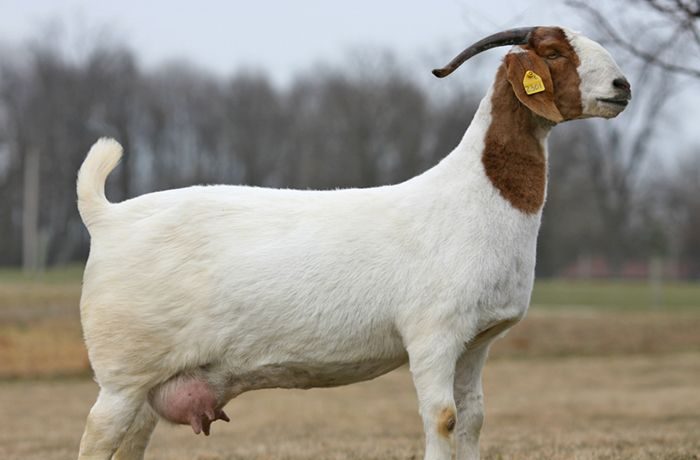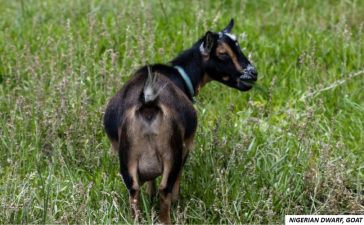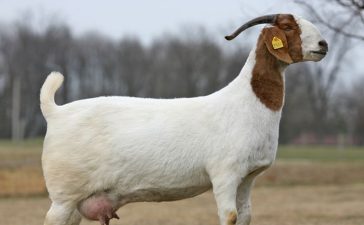The Heat Within: Decoding the Estrus Cycle in Female Goats [Part 3]
Keywords for search: bring female goat into heat | how to make a doe come in heat | stimulate heat in goats naturally | goat heat cycle nutrition | feeding goats for breeding | fertility diet for goats | herbal remedies for goat estrus | natural ways to induce goat heat.

Key Topics: - Essential vitamins and minerals for reproductive health - Herbal supplements known to influence heat (e.g., fenugreek, raspberry leaves, ginseng) - Use of apple cider vinegar and molasses - Antioxidants and omega-3s - Avoiding feed that may disrupt heat cycles (e.g., high phytoestrogens) - Sample feeding schedule to prepare for breeding season
Introduction:
If you have already implemented the natural strategies covered in Part 2 of this article, then you know that health, light, and the “buck effect” are powerful tools. But there is one more piece of the puzzle – and it is right in your feed trough.
A doe’s reproductive system is incredibly sensitive to what she eats. In this post, we explore the critical role of nutrition in stimulating heat, and highlight herbal and natural supplements that have been used for generations to support goat fertility.
Whether you are flushing before breeding season, encouraging first-time heat in a young doe, or trying to bring an anestrous doe into cycle, what you feed her can make all the difference.
The Link Between Nutrition and Reproductive Health
A balanced, nutrient-rich diet ensures:
- Proper hormone production (estrogen, LH, progesterone)
- Ovarian activity and egg development
- Energy availability for heat behavior and conception
- Healthy uterine lining for implantation
Conversely, nutritional deficiencies are one of the most common causes of silent heat, skipped cycles, and low fertility.
Macronutrients That Influence Fertility
1. Energy (Carbohydrates & Fat)
Energy fuels reproductive hormone production. Underfed or thin does often suppress their estrous cycles.
Sources:
- Cracked corn, oats, barley (in moderation)
- Black oil sunflower seeds (BOSS)
- Beet pulp
- Alfalfa (moderate starch + good protein)
2. Protein
Essential for hormone synthesis and ovary function – but too much can be harmful, especially from high-nitrogen sources.
Ideal Range: 12–16% crude protein
Sources: Alfalfa, soybean meal, cottonseed meal, lupins, peas
Caution: Excessive protein can lead to metabolic issues and reduce fertility.
3. Fats
Fats help balance hormones and increase caloric density. Omega-3 fatty acids in particular have been shown to support ovarian function.
Sources:
- Whole flaxseed or flaxseed oil
- BOSS (also rich in Vitamin E)
- Rice bran oil
Key Vitamins and Minerals for Estrus
| Nutrient | Role in Reproduction | Sources |
|---|---|---|
| Vitamin A | Supports cervical mucus and ovarian tissue | Carrots, pumpkins, alfalfa |
| Vitamin E | Antioxidant; boosts egg health | Sunflower seeds, wheat germ |
| Selenium | Essential for fertility, works with Vit E | Selenium-enriched minerals (watch local soil content!) |
| Copper | Regulates estrus and immune system | Mineral blocks, kelp meal |
| Zinc | Hormonal synthesis and libido | Grains, supplements |
| Manganese | Egg development and fertility | Alfalfa, whole grains |
| Iodine | Thyroid function, metabolic balance | Kelp, iodized salt |
| Calcium & Phosphorus | Bone and reproductive health | Dicalcium phosphate, alfalfa, legumes |
Herbal Remedies to Encourage Heat in Does
Herbs have been used in animal husbandry for centuries. Many goat keepers report success using herbal supplements to stimulate estrus naturally or support overall reproductive health.
Here are some of the most trusted options:
🌿1. Fenugreek (Trigonella foenum-graecum)
How it Helps: Promotes hormonal balance and acts as a mild phytoestrogen (estrogen-like compound). May stimulate heat and increase milk production.
How to Use:
- Ground seeds in feed: 1–2 tsp per adult doe/day
- Start 2 weeks before expected heat
🌿 2. Raspberry Leaf (Rubus idaeus)
How it Helps: Tones the uterus, supports reproductive hormone activity, and balances cycles.
How to Use:
- Dried leaves as tea or loose supplement
- 1–2 tbsp per day for 2–3 weeks before breeding
🌿 3. Chaste Tree Berry (Vitex agnus-castus)
How it Helps: Regulates the pituitary gland, which controls LH and FSH. Often used in herbal reproductive blends.
Caution: Strong herb – use in moderation or consult a livestock herbalist.
🌿 4. False Unicorn Root (Chamaelirium luteum)
How it Helps: Traditionally used to encourage estrus and ovulation. Believed to stimulate the ovaries.
Availability: Can be hard to source sustainably. Use sparingly and ethically.
🌿 5. Ashwagandha (Withania somnifera)
How it Helps: Adaptogen that supports adrenal health and stress resistance – especially important in does recovering from illness or stress-related anestrus.
Dosage: 1–2 tsp powdered root per day mixed in feed.
Supportive Supplements from the Pantry
Apple Cider Vinegar (ACV)
Benefits: Improves digestion, supports pH balance, and is believed to help regulate heat cycles.
How to Use:
Add 1–2 tbsp per gallon of water during breeding season.
Blackstrap Molasses
Benefits: Rich in iron, calcium, magnesium, and potassium. Acts as an energy boost and mineral source.
How to Use:
- 1 tbsp mixed in feed or water (limit to 2–3x/week)
Kelp Meal
Benefits: Natural iodine and trace minerals; supports thyroid and reproductive hormone regulation.
How to Use:
- Free-choice or mixed into feed (~1 tbsp/day/doe)
Sample Fertility-Boosting Feeding Plan
| Timeframe | Feed/Herbal Strategy |
|---|---|
| 3 weeks pre-breeding | Start flushing with alfalfa + oats; add fenugreek and raspberry leaf |
| 2 weeks pre-breeding | Add ACV to water and begin kelp meal supplementation |
| 1 week pre-breeding | Introduce molasses, start flaxseed or sunflower seeds |
| During heat | Continue herbal teas + high-energy diet; reduce stress |
| Post-breeding (1 week) | Maintain nutrient-rich diet, continue raspberry leaf to support implantation |
Store-Bought Blends and Pellets
Several herbal or vitamin/mineral mixes are available for goat fertility support. Always choose non-GMO, organic where possible, and species-specific formulas.
Popular Brands (for example):
- Molly’s Herbals “Goat Fertility Tonic”
- Fir Meadow LLC “HormonEaze” or “Cycle Releaf”
- Dynamite Goat Minerals
- Sweetlix Meat Maker or Dairy Goat minerals
Note: Always check dosage, expiration, and adjust for goat size and breed.
Common Nutritional Mistakes That Suppress Heat
| Mistake | Consequence | Fix |
|---|---|---|
| Overfeeding grains | Fatty liver, reduced heat | Balance with roughage |
| Low-quality hay | Nutrient deficiency | Use green, leafy, mold-free hay |
| Mineral imbalance (esp. copper or selenium) | Irregular or silent heats | Use goat-specific mineral blocks |
| Over-reliance on herbs | Masking deeper health issues | Use as a support, not a cure |
| No flushing diet before breeding | Missed ovulation window | Begin early with strategic feeding |
Caution on Herbal Use
Herbs can be powerful. While most are safe, always:
- Introduce slowly to avoid digestive upset
- Use in rotation – don’t give the same herb year-round
- Stop herbal supplements if signs of pregnancy begin (unless confirmed safe)
Consult a livestock herbalist or goat-savvy vet for guidance when using complex blends, especially with maiden does or goats under medical treatment.
Final Thoughts:
Reproductive health begins in the gut and bloodstream – not just the barn. By feeding your does intentionally, you help build hormonal resilience, ovarian function, and fertile ground for new life.
Natural fertility support is both preventative and proactive. Herbs, minerals, and good nutrition form the foundation for consistent heat cycles, healthy pregnancies, and strong kids.
In Part 4, we will explore medical and hormonal interventions for when natural methods are not enough – including how and when to use CIDRs, Lutalyse, and synchronization protocols under veterinary guidance.



